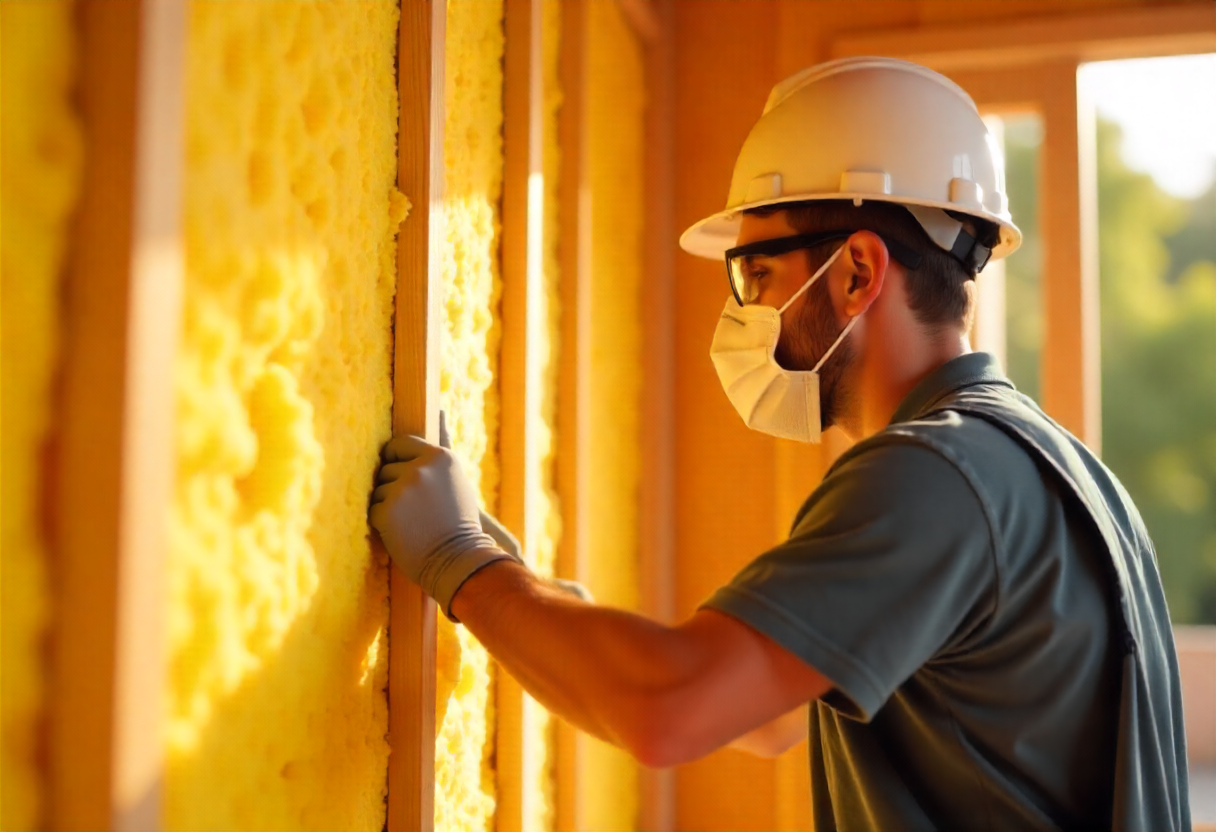How to Install Fiberglass Insulation in a Metal Building: A Step-by-Step Guide
man-installing-fiberglass-insulation
This guide provides clear instructions for insulating your metal structure with fiberglass material. Working with a trusted metal building contractor can help, but many property owners choose to handle this project themselves. The process involves preparing surfaces, measuring materials, cutting insulation to size, and securing everything properly. Understanding each step helps you complete the job safely and effectively. Following proper techniques yields better energy savings and increased comfort for your building.
Materials Needed
To Install Fiberglass Insulation properly, you need several basic materials and tools. Gather fiberglass batts sized for your wall and ceiling spaces, plus a sharp utility knife for cutting. Safety gear includes protective glasses, work gloves, and a dust mask to prevent breathing fiberglass particles. You'll also need a staple gun to attach the insulation securely. Having wire supports helps hold the ceiling insulation in place during installation. Collect all materials before starting to make the job go smoothly and prevent delays.
Preparing the Metal Building
Clean out your building before starting any insulation work. Remove debris, tools, and anything else that might get in your way. Look for gaps, holes, or cracks in the walls and ceiling that need sealing first. Check for sharp edges or metal pieces sticking out that could tear the insulation. Make sure electrical wires and fixtures are secure and won't interfere with your work. Taking time to prepare properly makes installation much easier and helps avoid problems later.
Measuring and Cutting Insulation
Measure each wall and ceiling section carefully before cutting any insulation. Use a tape measure to get exact length and width measurements. Mark spots where you'll need to cut around things like outlets, beams, or windows. Cut the insulation with a sharp utility knife, making clean, straight cuts without squashing the material too much. For curved walls or corners, measure twice and cut once to avoid waste. Good measuring and cutting means the insulation fits perfectly without gaps.
Installing the Fiberglass Insulation
Place the cut insulation pieces against the walls, making sure they fit snugly without gaps. Use your staple gun to attach the insulation to the metal frame, spacing staples evenly for a secure hold. For ceiling installation, you might need wire supports to hold the insulation up while you staple it in place. Cut carefully around pipes, wires, and other obstacles so the insulation fits tightly around them. Work systematically from one end of the building to the other to stay organized and avoid missing spots.
Sealing and Securing Insulation
Check your installation for any gaps or loose areas that need attention. Use foil tape or caulk to seal edges and joints where pieces of insulation meet. Add wire supports or metal bands if needed to prevent the insulation from sagging or shifting over time. Make sure all insulation sits flush against the walls and ceiling without air pockets. Install a vapor barrier over the insulation using adhesive or staples for extra protection against moisture.
Finishing Touches
Complete your installation with these important final steps:
Trimming Excess Insulation: Cut away any insulation that sticks out beyond the frame or looks uneven.
Sealing Gaps: Fill small openings with caulk or spray foam to stop air leaks and improve performance.
Checking for Compression: Make sure no insulation is packed too tightly, which reduces how well it works.
Securing Insulation: Add extra fasteners or tape where needed to keep everything in place.
Inspecting the Entire Installation: Walk through the whole building to spot and fix any issues or missed areas.
The finished installation should look neat and professional, with no visible gaps or loose material. Properly installed fiberglass insulation will keep your metal building comfortable in all weather conditions while reducing energy costs for years to come.
Related Topics:


